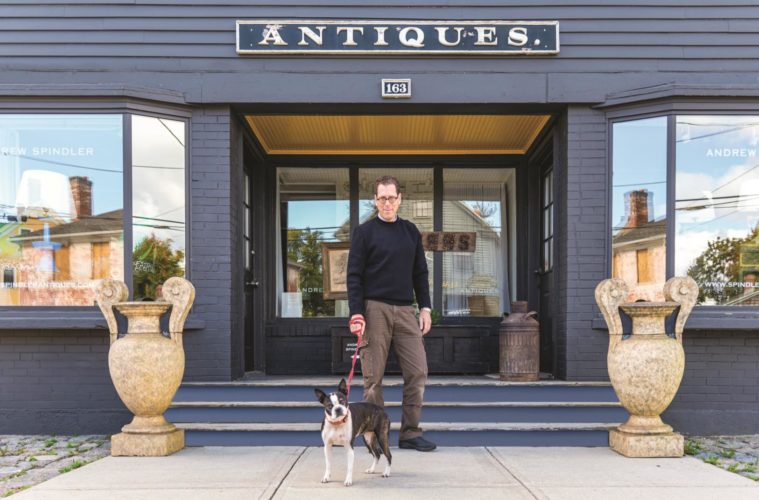Two things will likely greet you upon entering Andrew Spindler Antiques & Design in Essex: Daphne, owner Andrew Spindler’s sweet Boston terrier, who joins him every day at work, and a sense of serenity, because Spindler’s shop isn’t packed with dusty relics. The shop, which opened in 1998, offers a fresh way of looking at antiques. Spindler displays them almost as if his store were an art gallery—one where you can touch and pick up the goods.
“What’s different about my approach is I’ve always moved away from too much volume,” says Spindler, who grew up with an eye for beauty and an interest in art and design. “One of the great phobias that people have about antique shops is that they’re these eye-glazing firetraps. I’ve always wanted to give breathing space to pieces and highlight their sculptural qualities. There are great things from all periods, and so I want to present each of them as great objects with their own style and design, but all in conversation with one another.” The result is an airy, white-walled shop offering a variety of vignettes that Spindler has created with fine period furniture, works of art, decorative items, curiosities, and lighting from the 17th to the 20th century.
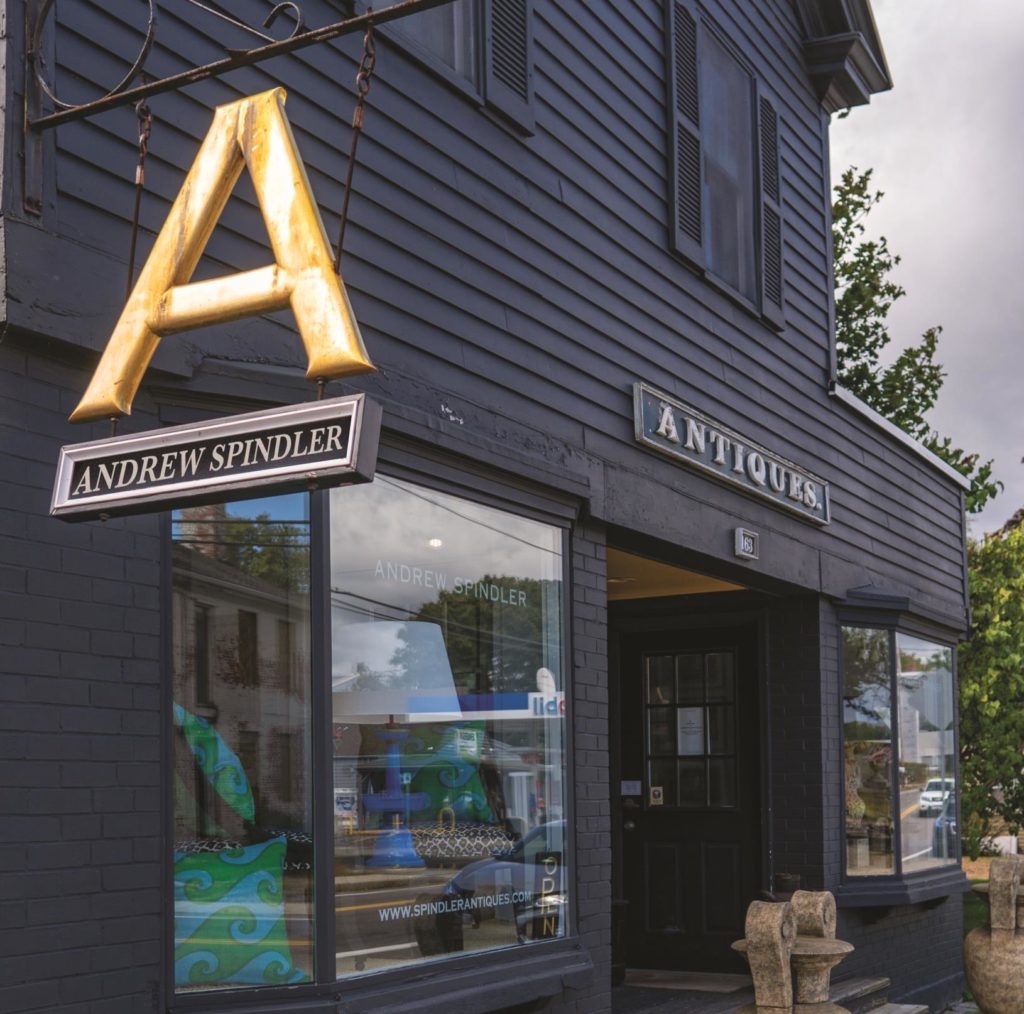
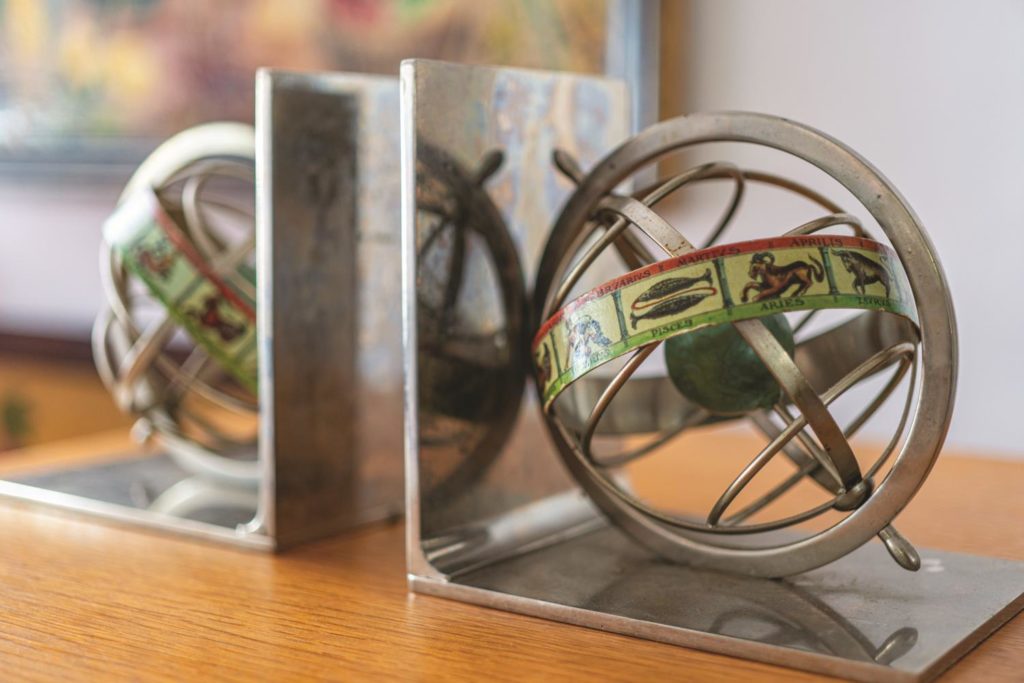
“Antiques used to be a trophy thing, and through them you would see their owner’s knowledge and sense of refinement,” says Spindler. “Now the big trophy thing for homeowners is the kitchen, which is not a place to hang fine art. But people still want things that are special, and not necessarily expensive, but different. So the way people buy antiques now isn’t to create a period interior, but to buy interesting objects to make a strong stylistic statement.”
Before Spindler devoted himself to the world of antiques, he was in academia. He had already received his master’s degree in Spanish literature at Yale University, and was contemplating pursuing a Ph.D. to become a professor when a dear friend and mentor convinced him to follow his bliss. So, in 1992 Spindler moved to London to attend Sotheby’s Institute of Art in London, where he immersed himself in the world of furniture, silver, tapestry, porcelain, and the decorative arts.
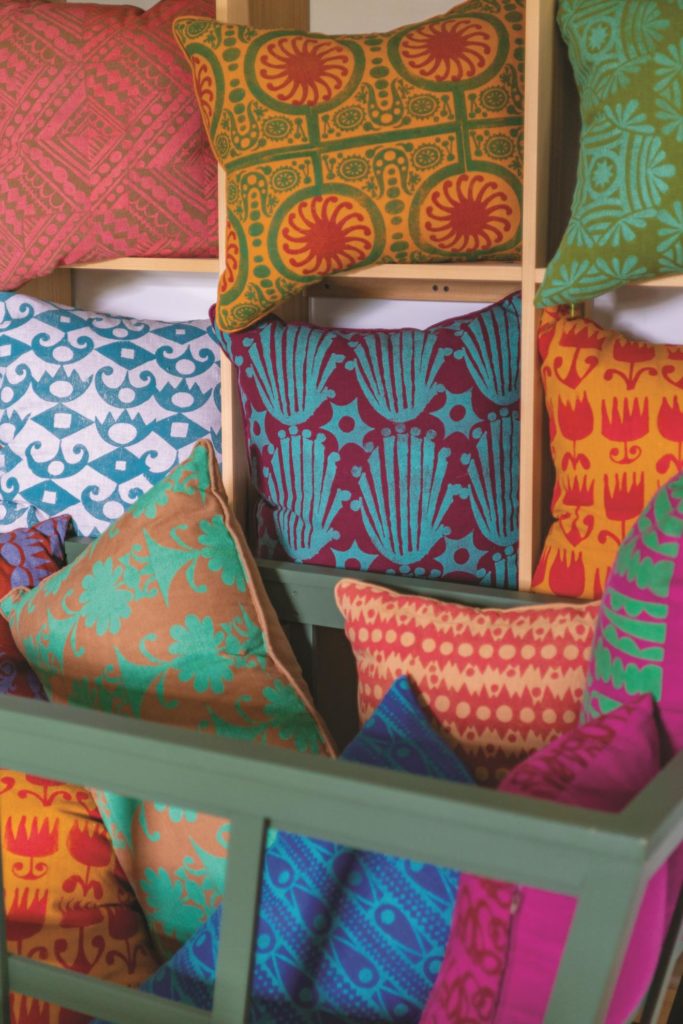
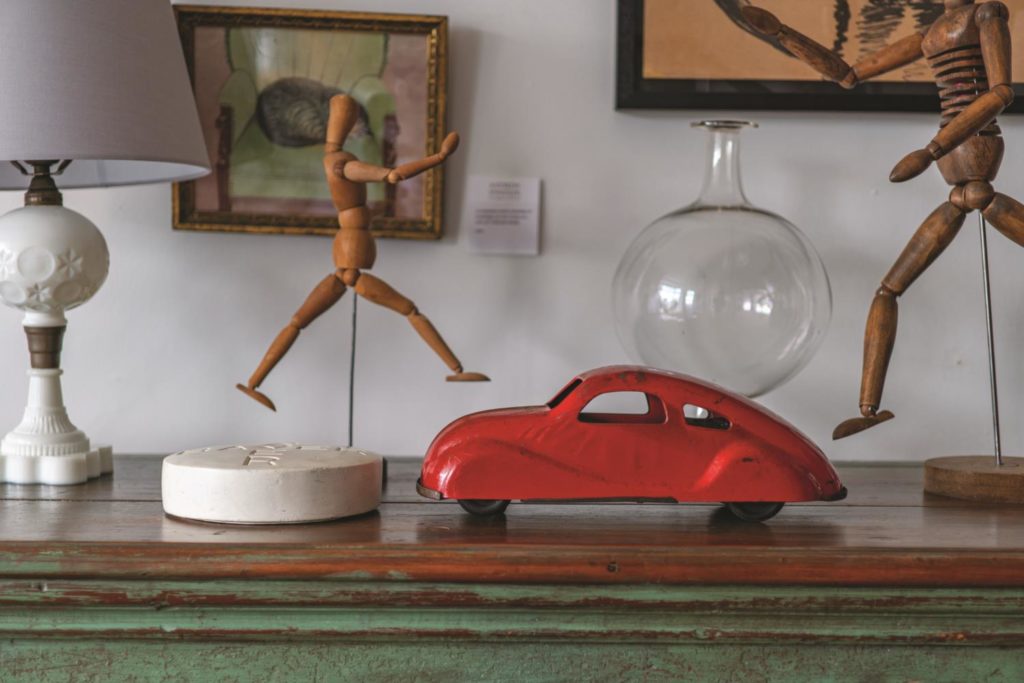
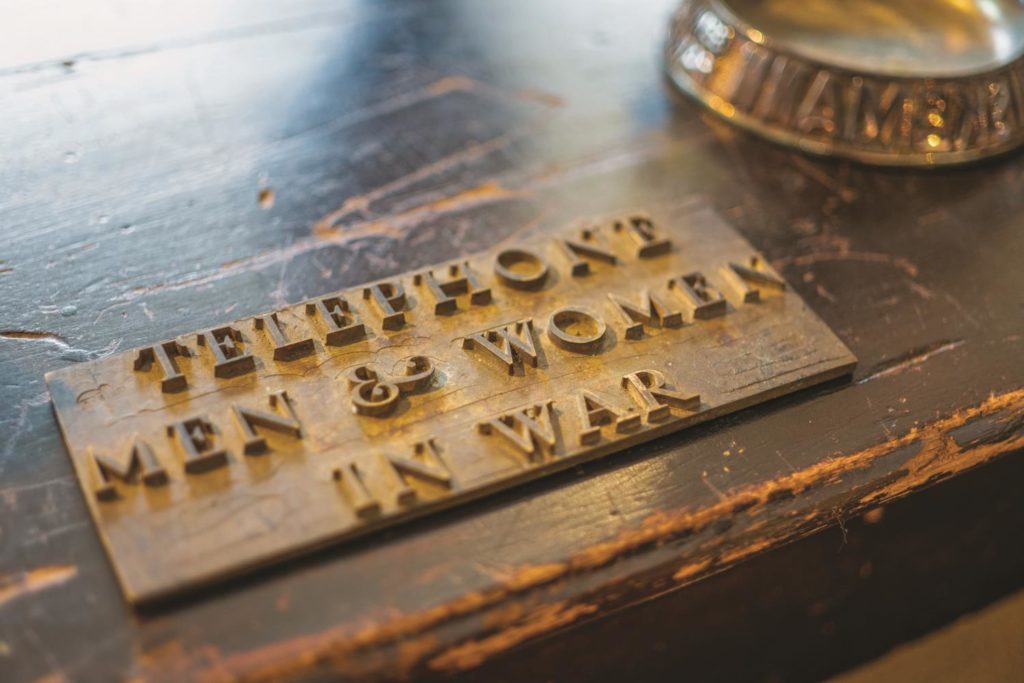
“I was already in the academic mode, but what was so different and important about this program was that it was very, very object oriented and connected with an auction house,” says Spindler. “We would go to museums and country houses all the time and look, look, look, look, look! It really trained our eyes. English furniture [for example], is pretty complicated in terms of the marks and styles, and you need to know how to analyze it—figure out how old it is, where it came from, how it was made. Those are the skills I use every day.”
After London, Spindler moved to Manhattan to work at Devenish & Company, one of the foremost dealers in fine antique English furniture. “It was a great learning opportunity,” Spindler says. “I learned how to run a business and was surrounded by very fine furniture and works of art. I got to go to The Winter Show, one of the top events in the country and world [for art, antiques, and design], and I got to learn how the owner acquired certain inventory—why he bought specific antiques, how he sold them, and who he sold them to.” After two years in New York, Spindler felt confident enough to go out on his own.


Initially, he planned to set up shop on Charles Street in Boston, home to a plethora of well-known antiques shops. However, Boston’s costly real estate, parking hassles, and the difficulty of moving furniture in and out of a tight urban environment ultimately made him reconsider. So he began looking for opportunities on the North Shore, including Essex, known for its many antiques shops.
“There were just so many advantages to having a shop in Essex,” says Spindler, who lives in Gloucester. “It’s a combination of the density of the shops, the beauty of the area, the proximity of where I live, and the fact that people really love to come to the North Shore.” Indeed, a visit to Essex to go antique hunting is likely to include a variety of other activities, including popping into a gallery or two, a lunch of fried clams, and a stroll down Main Street to see the picturesque salt marshes.
While Spindler admits that owning an antiques store was never a way to hit pay dirt, he has done respectably well and additionally cherishes the creativity and independence being a sole proprietor brings. “The key to success [in this business] is working all the time,” he says. “You have to be on the hunt all the time and you have to love that part of it.” Spindler often spends hours on the road going to auctions, buying from other dealers, and visiting the homes of people who want to downsize. Then he clocks more hours transporting the goods back to his shop and cataloguing and researching them before placing them in his ever-changing vignettes labeled with all the important details.
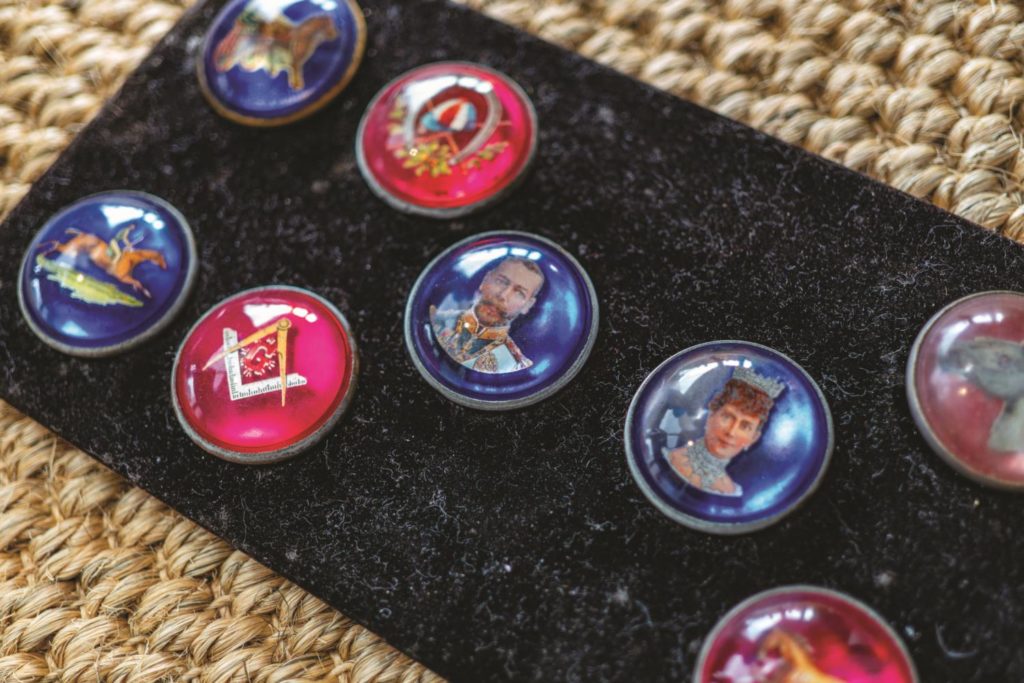
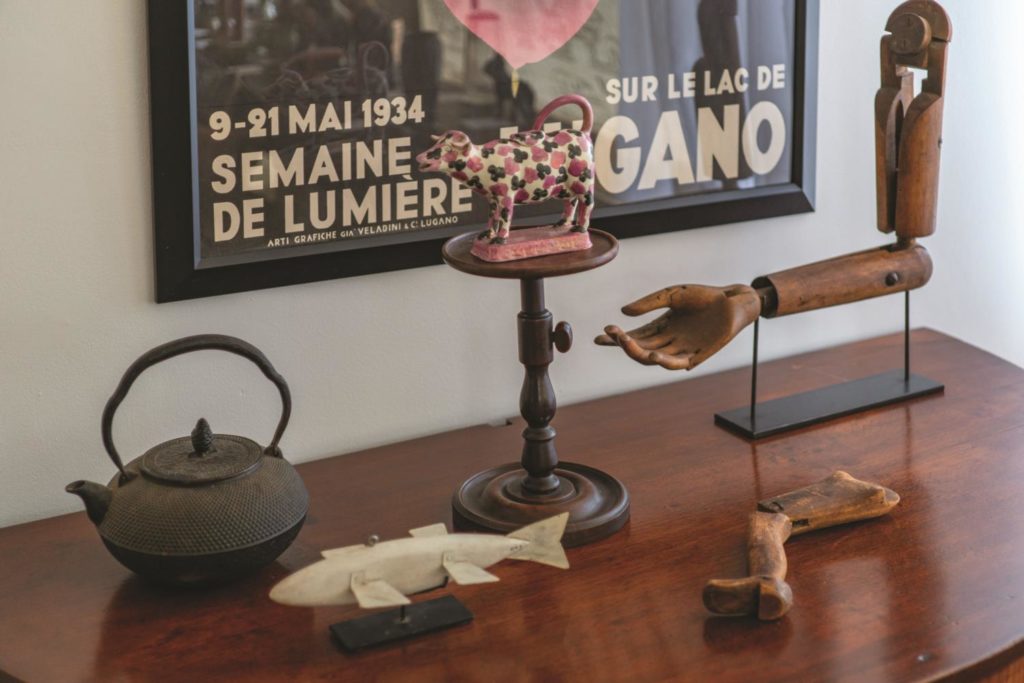
“I look for things that have a very strong form and have an age of antiquity but can read as contemporary,” says Spindler. “I mix things up between the shop and my house and it’s a rush to buy, if I can then sell, it because I get to buy more!” In addition to his shop, which is open seven days a week, Spindler sells his goods on-line—through his shop’s website and portals like 1st dibs. “For me, the Internet has opened up a huge marketplace and audience I wouldn’t have otherwise connected with. It’s also exposed me to people with enormous wealth around the world who wouldn’t come to Essex but are interested in what I do.”
As Spindler tells it, the days of hard-core collectors amassing tall clocks and brown furniture are largely over. In fact, he’s constantly getting calls from people who don’t know what to do with their grandmother’s formal china, silverware, and crystal because today’s lifestyles are so much more casual. Yet, Spindler remains hopeful.
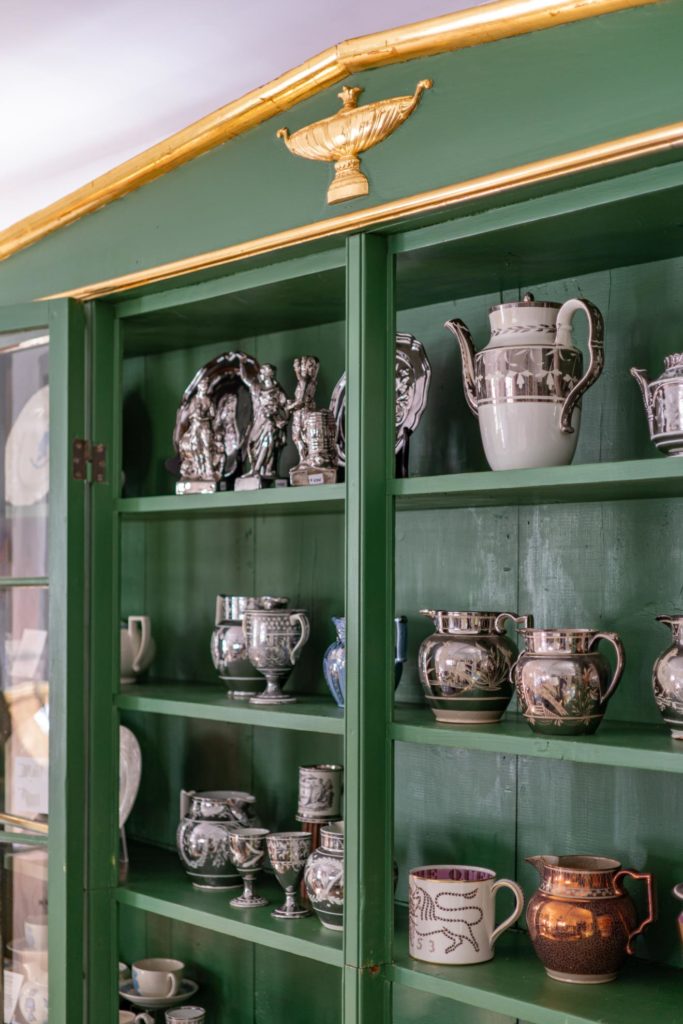
“The top of the antique market is still going strong,” he says. “People yearn for a sense of individuality. People want to be in touch with humanity, and antiques show the hand and heart of the maker, which you’re not going to find in anything you buy off the rack.”

